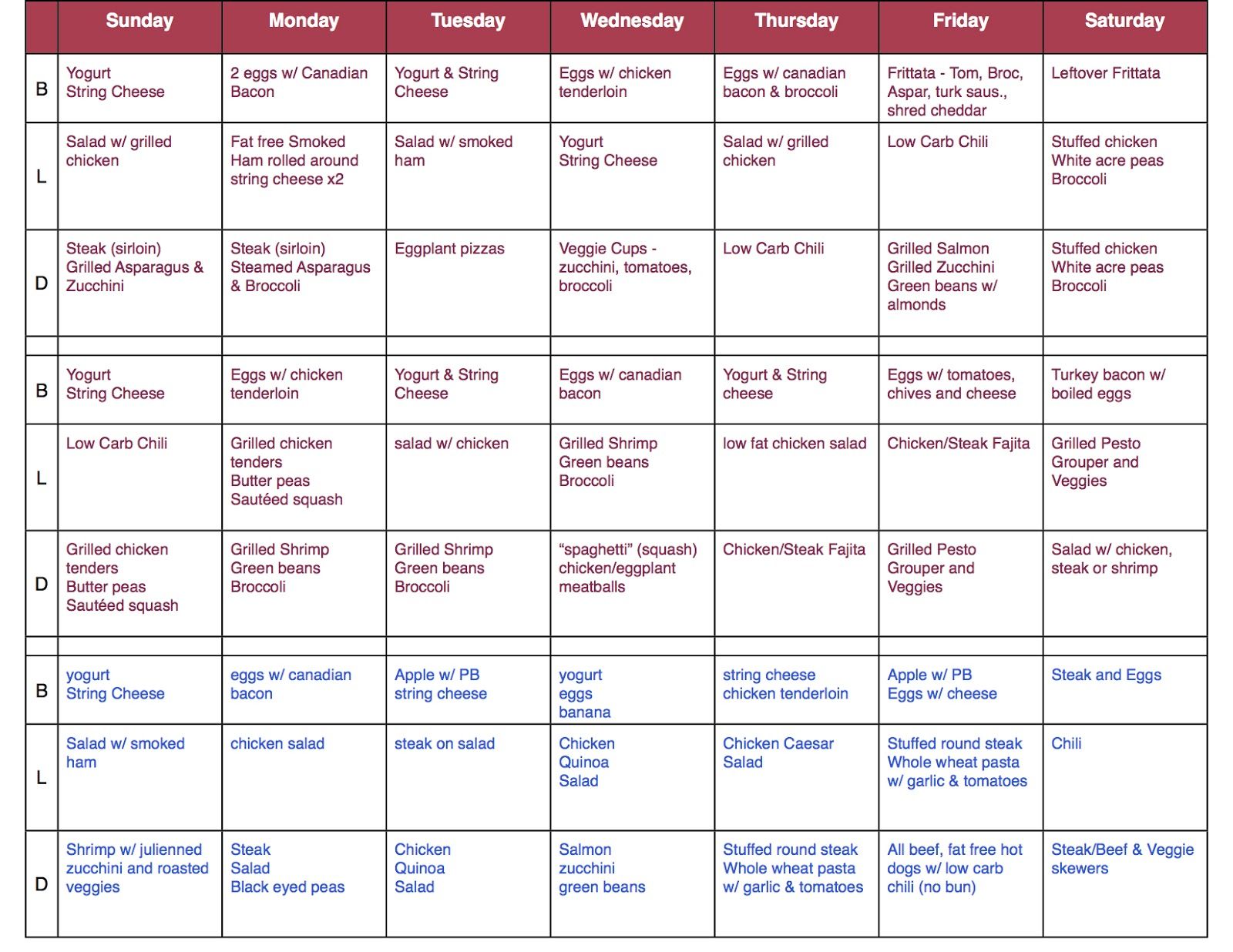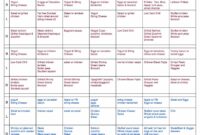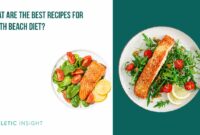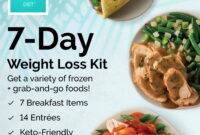South Beach Diet Phase 2 Meal Plan offers a structured approach to weight loss, moving beyond the initial restrictive phase. This plan emphasizes incorporating healthy fats, lean proteins, and carefully selected carbohydrates to promote sustainable weight management and improved overall health. Understanding the nuances of this phase is key to achieving long-term success and avoiding common pitfalls.
This guide delves into the specifics of the South Beach Diet Phase 2, providing sample meal plans, recipe ideas, and practical strategies to navigate this stage effectively. We’ll explore the permitted and prohibited foods, address potential challenges, and offer solutions for maintaining adherence. The focus is on creating a balanced and enjoyable eating experience that supports your weight loss goals and fosters a healthier lifestyle.
Overview of the South Beach Diet Phase 2
South Beach Diet Phase 2 builds upon the foundation established in Phase 1, allowing for a gradual reintroduction of certain foods while maintaining the focus on healthy eating habits and weight loss. This phase is designed to be more sustainable in the long term, offering a wider variety of food choices while still prioritizing nutrient-rich options.
Phase 2 emphasizes the continued restriction of unhealthy carbohydrates, such as sugary drinks, processed foods, and white bread, but it allows for the inclusion of some healthy carbohydrates and fats, leading to a more balanced and varied diet. This transition helps prevent feelings of deprivation and encourages the development of long-term healthy eating patterns.
Dietary Restrictions and Allowances in Phase 2
The core principle of Phase 2 remains the avoidance of high-glycemic index carbohydrates. This means foods that cause rapid spikes in blood sugar levels are still limited. However, unlike Phase 1, Phase 2 permits the addition of certain healthy carbohydrates and fats. Allowed foods include whole grains (in moderation), fruits (excluding high-sugar fruits like bananas and grapes in large quantities), legumes, and healthy fats such as olive oil and avocados. Foods to avoid continue to include sugary drinks, refined grains, processed foods, and foods high in unhealthy saturated and trans fats. The emphasis remains on lean protein sources, plenty of non-starchy vegetables, and healthy fats.
Comparison of Phase 2 to Phase 1
Phase 1 of the South Beach Diet is significantly more restrictive than Phase 2. Phase 1 focuses primarily on eliminating almost all carbohydrates, including fruits and many vegetables, to rapidly reduce blood sugar levels and initiate weight loss. Phase 2 introduces a wider variety of foods, including healthy carbohydrates and some fruits, making the diet more sustainable and less restrictive. The transition from Phase 1 to Phase 2 is gradual, ensuring a smoother adjustment and preventing potential nutrient deficiencies. The speed of weight loss is generally slower in Phase 2 compared to Phase 1 due to the increased caloric intake.
Expected Weight Loss Results During Phase 2
Weight loss in Phase 2 is typically slower than in Phase 1. While rapid weight loss is common in Phase 1, Phase 2 prioritizes sustainable weight management. The rate of weight loss will vary depending on individual factors like metabolism, activity level, and adherence to the diet plan. However, individuals can generally expect to continue losing weight at a moderate pace, perhaps 1-2 pounds per week. For example, a person might lose 5-10 pounds during Phase 2 over a period of several weeks, depending on their starting weight and adherence to the plan. Maintaining a consistent exercise regimen alongside the diet will contribute to greater weight loss and overall health improvements.
Food Choices and Restrictions in Phase 2
South Beach Diet Phase 2 marks a significant shift from the initial restrictive phase, allowing for a wider variety of foods while still maintaining a focus on healthy eating habits. This phase emphasizes the incorporation of healthy carbohydrates alongside lean proteins and healthy fats, paving the way for sustainable weight loss and improved overall health. Understanding the permitted and prohibited foods is crucial for successful navigation of this stage.
Permitted and Prohibited Foods in Phase 2
Phase 2 introduces a broader range of food choices compared to Phase 1. Many fruits, vegetables, and whole grains are now permitted, significantly increasing dietary variety. However, certain foods remain restricted to maintain the diet’s effectiveness. The focus remains on minimizing refined carbohydrates and unhealthy fats.
The Role of Macronutrients in Phase 2
The South Beach Diet Phase 2 emphasizes a balanced intake of macronutrients. Healthy fats, primarily monounsaturated and polyunsaturated fats, are essential for satiety and overall health. These fats are found in foods like avocados, nuts, seeds, and olive oil. Lean proteins, crucial for muscle maintenance and repair, are sourced from fish, poultry, beans, and lean cuts of meat. Complex carbohydrates, such as whole grains, legumes, and most fruits and vegetables, provide sustained energy without the rapid blood sugar spikes associated with refined carbohydrates.
Limitations on Unhealthy Foods in Phase 2
While Phase 2 expands food choices, it still maintains strict limitations on certain foods. Sugar, in all its forms (including added sugars and high-fructose corn syrup), remains largely prohibited due to its detrimental effects on blood sugar levels and overall health. Processed foods, often high in unhealthy fats, sodium, and added sugars, are also restricted. Unhealthy fats, such as saturated and trans fats, found in many fried foods and processed snacks, should be minimized to promote cardiovascular health. These limitations are key to maintaining the diet’s efficacy and promoting long-term health benefits.
Suitable Snacks for Phase 2
Choosing appropriate snacks is essential for managing hunger and preventing cravings during Phase 2. Suitable options include a handful of almonds or walnuts, a small portion of Greek yogurt with berries, a hard-boiled egg, or vegetable sticks with hummus. These snacks provide a balance of protein, healthy fats, and complex carbohydrates, promoting satiety and preventing blood sugar fluctuations. The key is to select snacks that are naturally nutrient-rich and avoid those laden with added sugars or unhealthy fats. For example, a small apple with a tablespoon of almond butter offers a good balance of fiber, protein and healthy fats, satisfying hunger without derailing the diet’s progress. Another good option would be a small portion of cottage cheese, providing a good source of protein.
End of Discussion
Successfully navigating the South Beach Diet Phase 2 requires commitment and a mindful approach to eating. By understanding the principles of this phase, utilizing the provided meal plans and recipes, and addressing potential challenges proactively, you can significantly increase your chances of achieving your weight loss objectives. Remember that consistency and a focus on long-term lifestyle changes are crucial for sustainable results. This plan is a stepping stone towards a healthier you, empowering you to make informed food choices and maintain a balanced, fulfilling diet.




